The School of Anthropology at the University of Arizona offers numerous Field Schools and several Study Abroad programs throughout the year. Below, please find links to our Field Schools that are currently accepting applications, or will be accepting applications in the coming months. Keep checking back for updated information!
Study Abroad
Arizona in the Aegean

No offerings 2022; check back for Summer 2023
This program introduces the fascinating world of ancient Greece and its masterpieces in art, architecture, and literature while traveling across the mainland and the islands of Greece.
Arizona in Orvieto, Italy
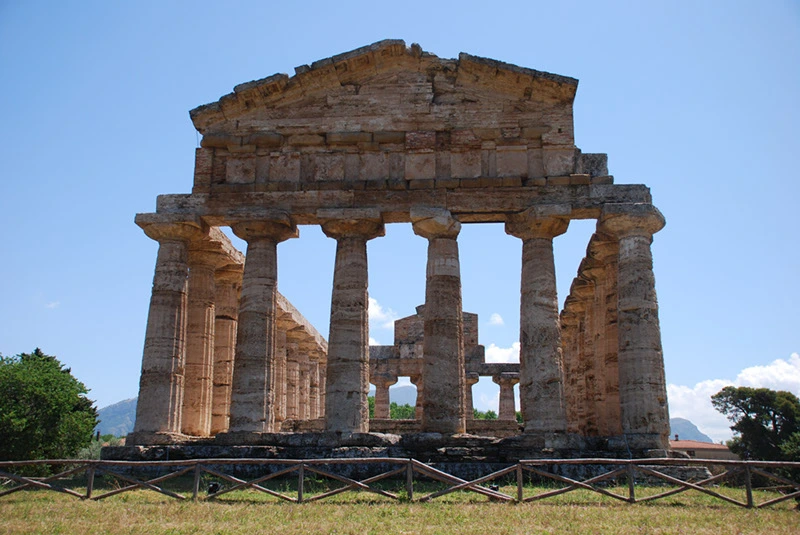
Application Deadline: February 25, 2022
Arizona in Orvieto is one of the most popular summer study abroad programs in the beautiful, quaint town of Orvieto, located just one hour from Rome. Course offerings include Archaeology, Anthropology, Architecture, Classics, Communication, Italian, Art & more!
Field Schools
Preservation Archaeology Field School in Southwest New Mexico
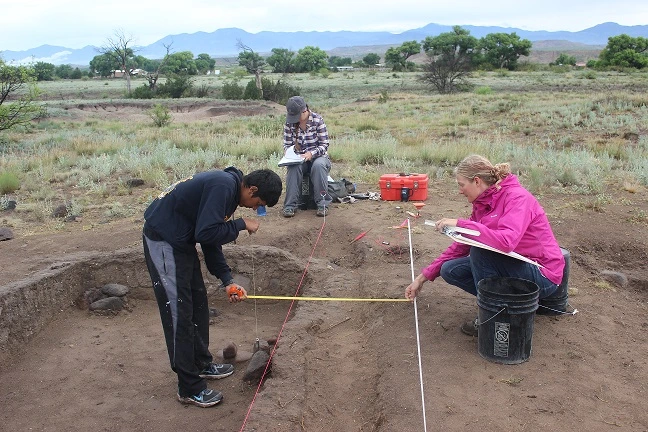
Join the University of Arizona, Archaeology Southwest, and Western New Mexico University this summer for our Preservation Archaeology Museum Curation and Survey Field School. Earn 7 hours of undergraduate or graduate credit while investigating how households cooperated in 11th-century southwest New Mexico by doing collections-based research, museum curation, experimental archaeology, and archaeological survey work.
Picuris Pueblo Field School
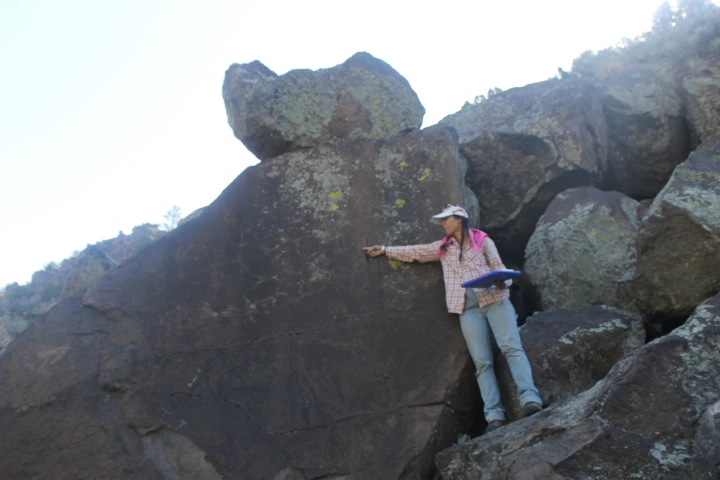
Application Deadline: TBA
At the Picuris Pueblo Archaeological Field School, students will earn 6 hours of undergraduate or graduate credit over the course of 4-weeks through hands-on training in archaeological fieldwork in the beautiful Sangre de Cristo Mountains of northern New Mexico.
For more information contact Lindsay M. Montgomery at lmmontgomery@email.arizona.edu.
ARCHEODIG: Excavation at Poggio del Molino
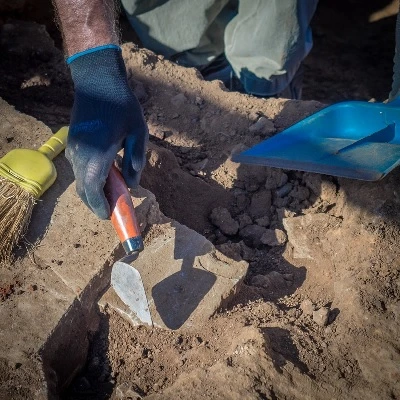
Application Deadline: TBA
The Archeodig Project was established in 2008 to help manage and coordinate archaeological excavations of coastal Etruria in order to understand and reconstruct the history of the area's ancient settlements.
Roman Fish Sauce Factory of Troia, Portugal

The Troia site is the world's largest archaeological site for the study of garum, or Roman fish sauce, which is made from sardines. It includes several miles of Roman factory establishment, including graves and worker housing as well as the production center. It is located in a spa within the beach resort community of Troia, Portugal, near Lisbon.
For information on how to apply, contact Dr. David Soren at soren@email.arizona.edu.
Lugnano in Teverina
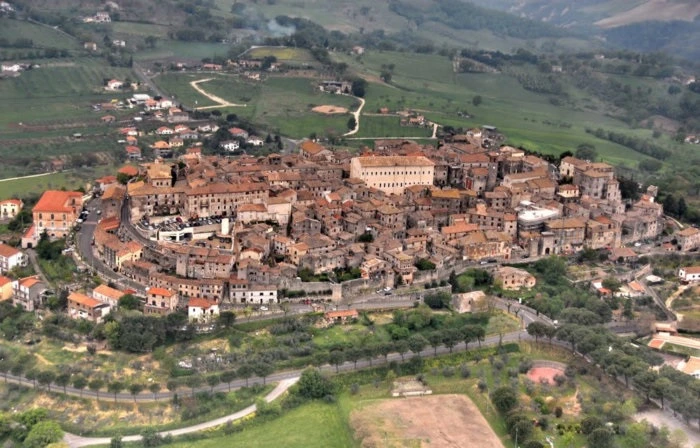
The site of Lugnano features the largest Roman villa ever found in Umbria and is also the site of Italy's famous Cemetery of the Babies (Il cimitero dei bambini) where more than 50 infant victims of a mid-fifth century A.D. malaria epidemic were found along with remarkable examples of witchcraft practices, including the sacrifice of several dogs with their jaws ripped apart, a raven's talon, and several bronze cauldrons filled with ash. The villa itself dates to ca. 15 B.C. and featured a unique pyramid vaulted dining room.
For information on how to apply, contact Dr. David Soren at soren@email.arizona.edu.
Campo Della Fiera
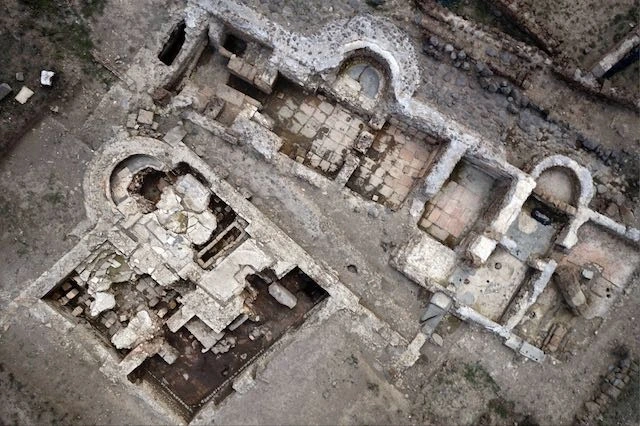
The wide and flat area extending west of the tufa plateau on which Orvieto rises owes its name, "Campo della Fiera" (the fair ground), to the fact that it was the venue for fairs and regular markets for centuries. Nineteenth century archaeological investigation detected the presence of an Etruscan place of worship in this area. UArizona students can be part of this famous excavation which is considered the most exciting Etruscan cult site in all of Italy.
For information on how to apply, contact Dr. David Soren at soren@email.arizona.edu.
Crocefisso del Tufo cemetery site in Orvieto
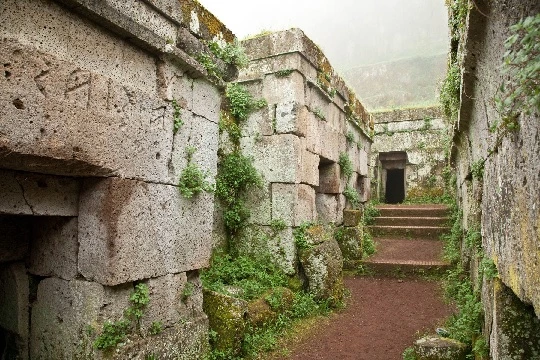
Travel fellowships are available to learn archaeological excavation at one of Italy's most important Etruscan cemetery sites. The cemetery site dates primarily to the fifth and fourth centuries B.C. and is one of the largest Etruscan cemeteries ever found.
Summer excavation schedule is available by writing to Dr. Claudio Bizzarri at claudio.bizzarri@libero.it or to David Soren at soren@email.arizona.edu.
Past Field Schools
Summers 2010-2013
In partnership with the White Mountain Apache Tribe, the University of Arizona hosted the Western Apache Ethnography and Geographic Information Systems Research Experience for Undergraduates each summer, 2010-2013. A National Science Foundation-supported REU Site, this field school introduced undergraduate students to ethnographic field research and to the use of Geographic Information Systems in the analysis and interpretation of ethnographic data.
Participants engaged in community-based participatory research, working with Western Apache elders, tribal natural resource managers, and heritage program personnel to contribute to the Western Apache tribes’ efforts to document cultural histories, traditional and local ecological and geographic knowledge, and issues of historic and contemporary resource management. Students’ final projects provided content included in a Western Apache cultural and historical atlas.

Western Apache Ethnography and Geographic Information Systems Research Experience for Undergraduates, Summer 2010
School Location
The field school was headquartered at the White Mountain Apache Tribe’s Fort Apache Historic Park, located on the Tribe’s 2,500 square mile trust lands and about 185 miles north of Tucson. The school’s classroom and lab and student and faculty housing were located in historic Fort Apache officers’ quarters, courtesy of the non-profit Fort Apache Heritage Foundation. Student research projects took them to locations throughout Western Apache aboriginal lands, including a large portion of eastern and central Arizona.
Schedule
The field school began the season by participating in and helping out at a girl’s coming of age Sunrise Dance. The next two weeks included intensive classroom and lab instruction, interspersed with day field trips. During the remaining four weeks, students spent increasing periods of time conducting independent research. Students also took part in regular evening seminars and several field trips.
Program Faculty
Karl A. Hoerig (Program Director and Faculty Mentor) is director of the White Mountain Apache Tribe’s Nohwike’ Bágowa Museum and the Fort Apache Heritage Foundation. He has worked with indigenous communities in the Southwest for more than 15 years, helping to facilitate heritage perpetuation through ethnography and cultural interpretation.
T.J. Ferguson (Faculty Mentor) is the School of Anthropology’s Professor of Practice. He works with a number of Puebloan and Athapaskan Indian tribes in the southwestern United States, conducting ethnographic, historical, and archaeological research addressing issues of settlement, land use and cultural landscapes, as well as the ownership of cultural items and intellectual property.
Thomas Pederson (Faculty Mentor) holds a Ph.D. in City and Regional Planning from the University of Pennsylvania. He is GIS Specialist for Atkin Olshin Schade Architects in Santa Fe, New Mexico. His professional practice is primarily focused on community based planning and cultural resource management. Among his current work is a long-term project to rehabilitate the historic core of Ohkay Owingeh Pueblo in northern New Mexico, engaging youth from the pueblo to document the village using GIS.
John R. Welch (Faculty Mentor) is an Associate Professor in the Department of Archaeology and the School of Resource and Environmental Management at Simon Fraser University in Vancouver, B.C. He has worked with the White Mountain Apache Tribe for more than 25 years, serving as the Tribe’s Historic Preservation Officer from 1992 to 2005. Welch’s current collaborations center on cultural heritage issues at the interface of sovereignty and stewardship—the practical and political decisions and dynamics that determine what is to be carried forward into the future.
A large group of Western Apache elders and knowledge holders, tribal staff, resource managers, and community members generously serve as vitally important contributors to student training.
For more information about the Western Apache Ethnography and Geographic Information Systems Research Experience for Undergraduates, please contact program director Karl Hoerig at khoerig@fortapachearizona.org.
Funding Grant Information
The Western Apache Ethnography and Geographic Information Systems Research Experience for Undergraduates is a National Science Foundation REU Site, and receives major funding from the National Science Foundation under Grant No. 1004556. Any opinions, findings, and conclusions or recommendations expressed in this material are those of the author(s) and do not necessarily reflect the views of the National Science Foundation.
Spring 2015
ANTH 442A & 442B, Section 2 (Undergraduate) / ANTH 542A & 542B, Section 2 (Graduate)
This field school combined training in excavation and analysis of material remains from several prehistoric and historical contexts in and around the 18th century Spanish mission, Mission Los Santos Ángeles de Guevavi, located in part within Tumacácori National Historic Park (National Park Service).
The field school was carried out as a collaborative project between the University of Arizona, the National Park Service, and Desert Archaeology, Inc. Field school participants learned excavation methods, advanced mapping techniques, curation and analysis of artifacts, archaeological interpretation, and archaeological ethics and legal mandates. Lectures, discussions, and research projects augmented field and laboratory experiences.
Project Location
Mission Guevavi is located on the Santa Cruz River approximately one hour south of Tucson, Arizona, in the picturesque Sonoran Desert. Temperatures in the Spring Semester are ideal for archaeological field work.
Archaeological Setting
Archaeological investigations focused on several contexts in and around the mission, including several prehistoric features in addition to possible mission-period contexts. These contexts are currently under threat of destruction by cattle or vehicular traffic.
Mission Guevavi was founded in 1691 by Father Kino near a small community of O’odham farmers. The community briefly served as a head mission, but was abandoned in the 1770s. The site consists of the ruins of the church and associated mission buildings, mission-period middens, and numerous historic and prehistoric features. The field school will focus on recovering archaeological data from several endangered contexts including several unidentified adobe-walled structures, and several prehistoric features and structures.
Course Instructors
Barnet Pavao-Zuckerman (Associate Curator, Arizona State Museum; Associate Professor and Associate Director, School of Anthropology). Research interests include historical archaeology, zooarchaeology, Spanish colonialism. She joined the faculty of the University of Arizona in 2002.
Collaborating Instructors
J. Homer Thiel (Project Director, Desert Archaeology, Inc.) is an expert in historical archaeology, genealogy, and faunal analysis in the southwestern region. He has worked for Desert Archaeology since 1992.
Jeremy Moss (Park Archaeologist, Pecos National Historical Park). Research interests include archaeology, historic preservation, cultural and natural resource management. He worked as park archaeologist at Tumacácori NHP from 2004 to 2013 and, although now at Pecos, continues his close involvement in the project.
Summer 2015
A joint program of the University of Arizona and Archaeology Southwest at the Preservation Archaeology Field School.

Preservation Archaeology Field School, Summer 2015
Students investigated how ancient communities formed during an era of migration and social change. The team excavated at the 14th-century Dinwiddie site in beautiful southwest New Mexico and recorded sites on survey, analyzed what was found in the lab, and learned to make and use ancient tools while building a full-scale replica of a Salado adobe room.
Field trips to archaeological sites, visits to contemporary Native American communities, and public outreach events in our project area emphasized communication with diverse audiences. Together, students and staff explored ethically responsible and scientifically rigorous field and research methods while investigating compelling questions about our shared past.
Students participated in test excavations at the Dinwiddie site near Cliff, New Mexico. Farmers lived in this adobe pueblo community during the period from A.D. 1300-1450. Community members participated in the Salado ideology, which blended preexisting local traditions throughout the Southwest with traditions carried by migrants from the Kayenta area of northeastern Arizona. Key questions included what kinds of pottery the site’s residents made and used and how this reflects their social connections to other areas, how residents used local plants and animals, and where they obtained raw material for stone tools, particularly obsidian.
This field school was funded as part of the National Science Foundation’s Research Experiences for Undergraduates (REU) program (NSF Award No. 1359458). Additional information about ongoing work in southwestern New Mexico can be found on the Archaeology Southwest website.
Program Schedule
The field school began at Archaeology Southwest’s Tucson headquarters, where students took part in a three-day orientation to the Southwest before proceeding to our field site. Experienced staff members from academic and Cultural Resource Management backgrounds worked side by side with students throughout the course. In addition to excavation skills, students learned how to locate and document sites on survey and assess their condition, and how to process and analyze artifacts in the lab. Experimental archaeology activities included building a replica adobe room and lessons in flintknapping, atlatl use, and other ancient technologies. Lectures, field trips, and public outreach events expanded these essential skills and presented real-world opportunities to practice the principles of Preservation Archaeology.
Location, Accommodations, and Transportation

The field camp lies at 5,200 feet above sea level in the scenic valley of Mule Creek, New Mexico, between Safford, Arizona, and Silver City, New Mexico. Students and staff camped on the Rocker Diamond X Ranch, a working cattle ranch with basic yet comfortable accommodations. Students provided their own tents and sleeping equipment. Camp amenities included a comfortable outdoor shower enclosure, portable toilets in camp and at our work site, and a camp house with electricity, running water, and kitchen where a professional cook prepares project meals using locally-sourced ingredients. During our orientation in Tucson, field school students resided in campus housing.
Program Instructors
Karen Gust Schollmeyer is a Preservation Archaeologist at Archaeology Southwest and a Visiting Scholar at UA. She received her Ph.D. in Anthropology from Arizona State University in 2009. Her interests include long-term human-environment interactions; food security and landscape use; and how archaeologists’ long-term insights can be applied to modern issues in conservation and development. Her research has been published in American Antiquity, the Journal of Archaeological Method and Theory, the Journal of Anthropological Archaeology, Kiva, and various book chapters. She has directed numerous field schools in southwest New Mexico.
Jeffery J. Clark is also a Preservation Archaeologist at Archaeology Southwest and an adjunct faculty member at UA. He received his Ph.D. from the University of Arizona in 1997. Dr. Clark has worked extensively in Southwest Asia and the southern U.S. Southwest. His primary research interest is assessing the scale and impact of ancient migration using archaeological data. He has written extensively on the topic, including one monograph, an edited book, several book chapters, and articles in Proceedings of the National Academy of Sciences, American Antiquity, Kiva, Journal of Field Archaeology, and Journal of Archaeological Research.
Summer 2016
The University of Arizona School of Anthropology’s Rock Art Ranch Fieldschool has been conducting fieldwork since 2011 in northeastern Arizona near Winslow. The fieldschool is for undergraduate and graduate students at all skill levels.
In Summer 2016, a new program within the fieldschool started: a National Science Foundation funded Research Opportunity for Undergraduate Student (REU) program (Grant 1262184). The REU Program involved five weeks of fieldwork plus two weeks of work within Arizona State Museum (ASM) labs on the University of Arizona campus.
The program focused on teaching students the basics of scientific methodology and how it is applied in the everyday world, in this case through archaeological research of past groups.
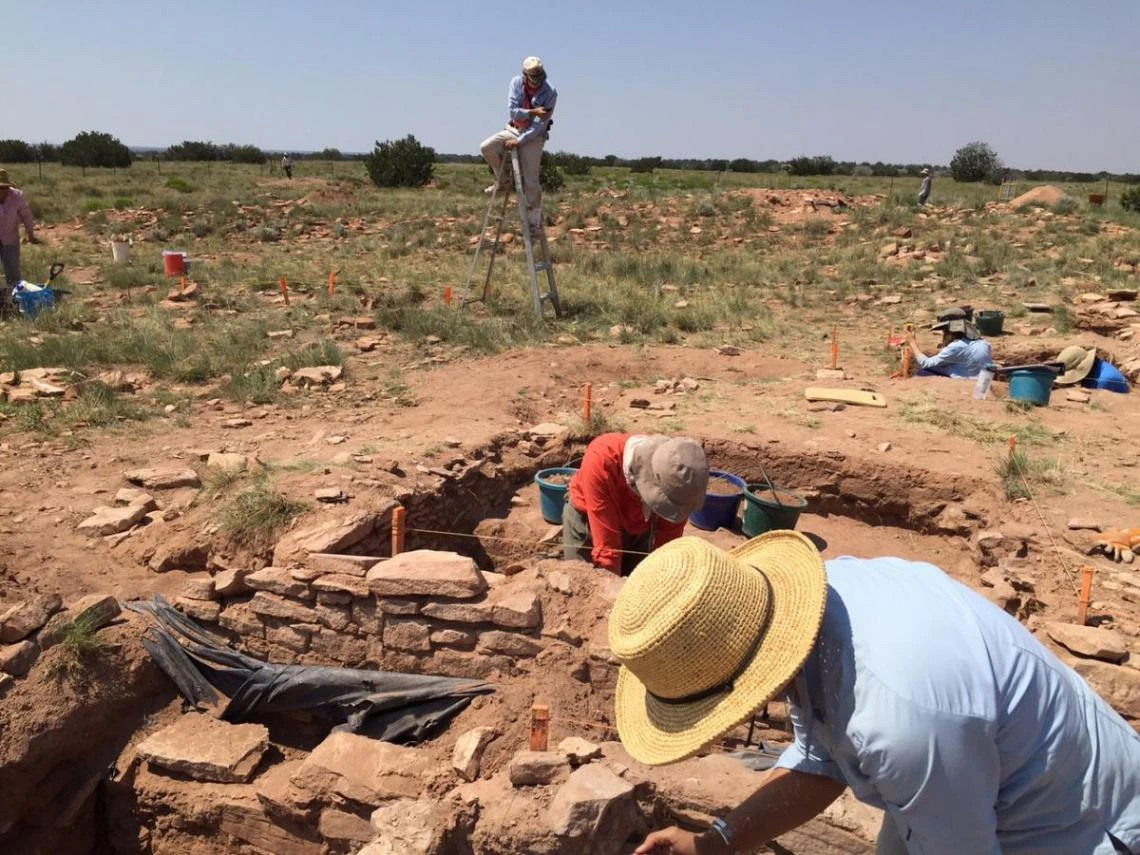
Learning Outcomes
Participants learned archaeological survey and excavation techniques for the first five weeks of the program. For survey, participants learned site identification, location and mapping using GPS and a total station; artifact identification, collection and processing; soil and plant identification; and artifact analysis and sourcing. For excavation, the participants learned mapping at all levels of the site, feature identification, the principles of stratigraphy and their application to the archaeological record, seriation techniques, artifact identification and typology, and basic laboratory procedures – cleaning, inventorying, and basic analysis. Finally, participants were shown how to combine survey, excavation and lab analysis, to have a more complete understanding of human society in the past can be achieved.
During the two weeks at ASM, students spent two days each with ASM faculty in the Conservation Lab (how to preserve objects), Bioarchaeology Lab (study of human remains), and Zooarchaeology Lab (study of animal bone), plus three days in the Homol’ovi Archaeology Lab for more detailed study of pottery, stone tools, etc. and to complete research projects. The last day students will present the results of their projects to other students and faculty.
Fieldschool Location
Rock Art Ranch is a private ranch 25 miles southeast of Winslow that still raises cattle and bison. The ranch contains some of the Southwest’s most spectacular rock art with more than 3000 glyphs, which have been completely documented, dating from 6000 BCE to 1400 CE. The ranch lies in the high desert at 5100’ elevation, in an area used over the past 13,000 years by mobile hunting and gathering groups, early farmers, and later, after 500 CE, by ceramic-producing, sedentary farmers representing archaeological cultures of the adjacent Mogollon Rim and Colorado Plateau regions. No professional archaeological work had been conducted on the ranch or its nearest neighbors, other than documentation of the petroglyphs, until the fieldschool began in 2011.
For 2016, participants focused on finding and describing the archaeological record of the ranch through survey while conducting a third season of excavations on a small pueblo on the ranch (AZ P:3:114) radiocarbon dated 1225-1255 CE. To date 153 sites have been documented and collected on the ranch representing how people have used the landscape over the past 13,000 years, providing insight into how and why groups migrated to and from the area, and what role the rock art played in communicating identity and ownership for these groups. Through radiocarbon dating, excavations have already helped develop a tighter chronology for the area and provided details on length of site occupation and subsistence base. The 153 new sites cluster in three time periods: Archaic/Basketmaker II (pre/early agricultural), 3000 BCE-500 CE; Basketmaker III/Pueblo I, 600-1000 CE; and Pueblo III, 1100-1250 CE. However, in 2015 we discovered and recorded two Paleoindian sites with a range of points from Agate Basin to Clovis that suggests hunting of extinct animals on the ranch 11,500 to 6,000 BCE.
It is the BMII groups who created most of the petroglyphs. BMII, BMIII, and PI ancestral pueblo groups occupied pit houses, rooms excavated into the ground, whereas PIII groups built small to medium-size pueblos of 5 to 20 rooms. Each habitation site housed 2-5 families. Locations where Pueblo groups farmed have also been discovered and are helping us understand the complex and lengthy use of Rock Art Ranch by groups with different subsistence bases over the past 13,000 years. The pueblo to be further excavated is part of a small community of farmsteads (pueblos of 2-10 rooms) surrounding extensive tracts of arable land on and just north of Rock Art Ranch.
Field Trips and Lectures
There were four field trips: one to the Hopi mesas for an opportunity to see communities and ceremonies of the descendents of some of the groups who lived in the research area; one to a local state park; the other two are National Parks and Monuments focused on archaeological sites. Talks by staff and guests, including indigenous anthropologists, took place 2-3 evenings a week during weeks 2-4 in the dining hall. These talks covered the past and present cultures of the region, geology, flora and fauna, dendrochronology (study of tree-rings), ceramic and lithic analysis, and much more.
Accommodations & Transportation
Students stayed in wood-frame cottages (no electricity) near bathroom facilities having electricity and showers for men and women. All housing is near the dining hall, which has electricity, with two bathrooms and a kitchen. There is also a small museum on site. The project lab for artifact cleaning and analysis is attached to the dining hall.
At the University of Arizona, participants were housed in a university dormitory and issued meal cards to be used during their stay. Participants were transported in University of Arizona vehicles to Rock Art Ranch from Tucson at the beginning and end of the fieldwork.
Program Faculty
E. Charles Adams (Program Director) is a Professor in the School of Anthropology and Curator of Archaeology in the Arizona State Museum, both at the University of Arizona. Research interests include Protohistoric and historic Pueblo archaeology, religion and ritual in the archaeological record, settlement patterns and land use. Dr. Adams will direct excavations at the 1225-1250 CE pueblo on the ranch and is overall principal investigator for the project.
Richard C. Lange (Associate Director) is a Research Specialist Principal at the Arizona State Museum, University of Arizona. Research interests include long-term survey and excavation in the area through the ASM Homol’ovi Research Program, cliff dwellings in the Sierra Ancha of central Arizona, settlement patterns and land use, ceramic and lithic analysis, and field methods. Mr. Lange will direct survey of the ranch.
Support for the Rock Art Ranch fieldschool in 2014-15 was provided by the National Science Foundation, Grant 1262184.
Summer 2016 & 2017
A joint program of the University of Arizona and Archaeology Southwest at the Preservation Archaeology Field School.

Students investigated how ancient communities formed during an era of migration and social change. Our team excavated at the 14th-century Gila River Farm site in beautiful southwest New Mexico. We recorded sites on survey, analyzed what we found in the lab, and learned to make and use ancient tools.
Field trips to archaeological sites, visits to contemporary Native American communities, and public outreach events in our project area emphasized communication with diverse audiences. Together, students and staff explored ethically responsible and scientifically rigorous field and research methods while investigating compelling questions about our shared past.
Students participated in test excavations at the Gila River Farm site near Cliff, New Mexico. Farmers lived in this adobe pueblo community during the period from A.D. 1300-1400. Community members participated in the Salado ideology, which blended preexisting local traditions throughout the Southwest with traditions carried by migrants from the Kayenta area of northeastern Arizona. Key questions include what kinds of pottery the site’s residents made and used and how this reflects their social connections to other areas, how residents used local plants and animals, and where they obtained raw material for stone tools, particularly obsidian.
Please see the Archaeology Southwest website for details on ongoing research in southwest New Mexico.
Program Schedule
The field school began at Archaeology Southwest’s Tucson headquarters, where students took part in a three-day orientation to the Southwest before proceeding to our field site. Experienced staff members from academic and Cultural Resource Management backgrounds worked side by side with students throughout the course. In addition to excavation skills, students learned how to locate and document sites on survey and assess their condition, and how to process and analyze artifacts in the lab. Experimental archaeology activities included building a replica adobe room and lessons in flintknapping, atlatl use, and other ancient technologies. Lectures, field trips, and public outreach events expanded these essential skills and present real-world opportunities to practice the principles of Preservation Archaeology.
Location, Accommodations, and Transportation
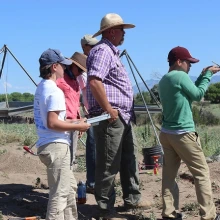
Preservation Archaeology Field School, Summer 2016
The field camp lies at 5,200 feet above sea level in the scenic valley of Mule Creek, New Mexico, between Safford, Arizona, and Silver City, New Mexico. Students and staff camped on the Rocker Diamond X Ranch, a working cattle ranch with basic yet comfortable accommodations. Students provided their own tents and sleeping equipment. Camp amenities included a comfortable outdoor shower enclosure, portable toilets in camp and at our work site, and a camp house with electricity, running water, and kitchen where a professional cook prepares project meals using locally-sourced ingredients. During our orientation in Tucson, field school students resided in campus housing.
Course Instructors
Karen Gust Schollmeyer is a Preservation Archaeologist at Archaeology Southwest and a Visiting Scholar at UA. She received her Ph.D. in Anthropology from Arizona State University in 2009. Her interests include long-term human-environment interactions; food security and landscape use; and how archaeologists’ long-term insights can be applied to modern issues in conservation and development. Her research has been published in American Antiquity, the Journal of Archaeological Method and Theory, the Journal of Anthropological Archaeology, Kiva, and various book chapters. She has directed numerous field schools in southwest New Mexico.
Jeffery J. Clark is also a Preservation Archaeologist at Archaeology Southwest and an adjunct faculty member at UA. He received his Ph.D. from the University of Arizona in 1997. Dr. Clark has worked extensively in Southwest Asia and the southern U.S. Southwest. His primary research interest is assessing the scale and impact of ancient migration using archaeological data. He has written extensively on the topic, including one monograph, an edited book, several book chapters, and articles in Proceedings of the National Academy of Sciences, American Antiquity, Kiva, Journal of Field Archaeology, and Journal of Archaeological Research.

